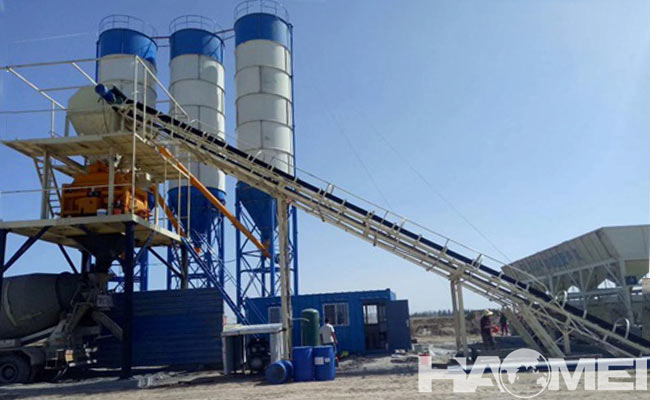Categories
- Case & News (49)
- Blog (521)
A concrete plant is a facility used to mix cement, sand, gravel, water, and other additives to produce concrete. It typically consists of several major components, including a raw material storage system, a weighing and metering system, a conveying system, a mixing system and a control system.

Below is the general flow of how does a concrete plant works:
– Preparation of raw materials: Different types of aggregates (e.g., crushed stone, sand), cement, admixtures (e.g., fly ash, slag powder, etc.), and admixtures are stored in separate storage bins. Water is stored in tanks.
– Weighing and batching: Based on the predetermined mix ratio, each material is accurately measured by the respective weighing equipment. The process can be batch, i.e. weighing out one batch of the required material at a time, or continuous, i.e. continuously adding and adjusting ratios in real time during the conveying process.
– Conveying materials: The measured raw materials are conveyed to the mixing host through belt conveyor/skip hopper, screw conveyor or other types of conveying devices.
– Stirring and mixing: After all the materials reach the mixing mainframe, mixing starts. There are various types of concrete mixers, such as forced mixers or self-falling mixers, which ensure that all ingredients are evenly mixed. The mixing time depends on the quality of concrete required and the requirements of the particular application.
– Discharge and transportation: The finished concrete is discharged through a discharge gate and loaded into a concrete mixer truck or pumped directly to the construction site.
– Monitoring and control: the entire process is supervised by a centralized control system that manages all the steps from batching to discharging, automatically or semi-automatically, ensuring accurate operations and enabling the recording of production data for subsequent analysis.
– Cleaning and maintenance: to ensure continuity of production and quality of the product, it is very important to carry out regular cleaning and maintenance of the concrete batching plant equipment. This includes cleaning the inside of the concrete mixer, checking conveyor belts and replacing worn parts.
The design and size of concrete batching plants can vary according to specific needs, from small mobile concrete plants to large stationary concrete plants. Modern concrete plants are often equipped with advanced automation technology and environmental measures, such as dust collection systems and wastewater recycling systems, to minimize environmental impact.